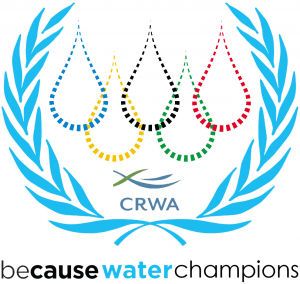The 2014 Winter Olympics in Sochi are officially underway, bringing recognition and respect to the top performing athletes in the world.
Olympic athletes are a breed of their own. Some are the fastest, others the strongest, but every olympian must possess the utmost dedication to his or her respective sport.
BeCause Water is shining light on the winter olympics to catapult an ongoing ceremony of our own. The BeCause Water Champions series recognizes the top performing water researchers, scientists, activists, entrepreneurs, and other water aficionados dedicated to the betterment of the most essential resource to mankind.
We are commencing our first official spotlight with a well known non-profit out of Weston, Massachusetts. A waterway once perceived as foul and toxic, one that local 1960s rock band The Standells tagged as “Dirty Water”, is now rated as one of the top urban waterways in the United States. This standing was tested over the summer with a public swimming event held in the Charles River – the first of its kind in 50 years.
The remarkable improvements seen in the Charles River are largely due to the efforts of one of the country’s oldest watershed organizations. The first recognition in BeCause Water’s Champion series pays respect to the Charles River Watershed Association.
* Photo Credit: Charles River Watershed Association
Ever since their formation in 1965, the mission of the Charles River Watershed Association (CRWA) has focused on improving the Charles River, from advocacy of its parkland expansion to fostering partnerships across state and private entities to promote sustainable practices.
As the CRWA’s work is science-based and informed, a large part of what they do involves monitoring and analyzing the data collected on the watershed through their Field Science Program. Water quality tests are regularly conducted, along with streamflows, and monitoring of fish and invertebrates. CRWA is then able to utilize their data to make decisions in the event of overflows and other similar situations. Staff scientists conduct much of the work and advising, but what you might not know is that you can also help out! The CRWA relies as much on local residents, “citizen scientists,” as their staff to collect data and educate.
We had the privilege of exchanging questions and answers with Senior Scientist Julie Wood:
What would you like to see changed in the way the public perceives water?
“I’d just like the public to be more aware of fresh water as a finite valuable resource, its importance, how our actions affect the water supply, and how we can use it more efficiently. In a place as urbanized and water rich as eastern Massachusetts, we should all be aware of the valuable resource we have readily available to us. The Boston area gets over 40 inches of rain every year. Under natural conditions most of that rain water would seep into the ground, where it would be cleaned and stored as groundwater. But Boston’s infrastructure tends to work against the region’s natural hydrology: stormwater hits the pavement, where it picks up pollutants before flowing into the Charles. This pollutes the river and depletes the watershed’s supply of groundwater. At the same time, I want people to know that their actions can also improve the health of local waterways by implementing or advocating for sustainable policies, like low impact development systems, which strives to construct built infrastructure that works with the region’s natural hydrology and helps restore the groundwater supply.”
What is the biggest challenge that CRWA and similar watersheds are facing in advocating for and protecting watersheds?
“There’s really no one answer to this, two major challenges we run into are the incongruity of political boundaries and natural boundaries and facing a vast, complex problem with the limited resources we often have to work with. The Charles River’s watershed is an area of 308 square miles and includes 35 separate municipalities, each with their own sets of regulations and priorities.
At CRWA, we take a watershed view, looking at the natural system and what is best for the river overall. This means interfacing with many different municipalities, agencies and parties, working to bring everyone together to do what is best for the river, not just what is in their immediate interest.
Additionally, we’re a small organization, so engaging with many separate town governments and interest groups can be a difficult balancing act. On top of that, watershed protection suffers when government organizations at all levels: federal, state, and local, cut back their budgets.”
What has been the greatest “victory” the CRWA achieved so far in its history?
“In the late 1960’s, CRWA and local activists resisted the Army Corps of Engineers’ flood control proposal to build dams and dykes, and to channelize the river. Instead, the Corps purchased nearly 13 square miles of wetlands as flood storage. Known as the Natural Valley Storage Area, the value of these protected wetlands is manifest as the occurrence of 100 year storms increases. They also provide water quality benefits, protect wildlife habitat, and offer recreational opportunities for communities.
Additionally, fish populations in the Charles have been stressed by poor water quality, dams, warm temperatures, and low summertime flow; and many species have disappeared. However, improvements to fish ladders and fish migration, dam removal, and improved water quality have resulted in the MA Department of Fish and Game (with CRWA support) restocking the river with American Shad. To date, 23 million shad larvae have been released to the Charles River, and beginning in 2011, adult shad were observed returning to the river to spawn!
We are also very happy with how far the river has come in improved water quality. This summer saw the first public swim in the Lower Charles River Basin since the 1950s. The river has been safe for boating for a number of years now, but the fact that the river is now clean enough for swimming tells us that our work has made an impact on the Charles and helped the people of Boston and surrounding communities.”
You mentioned that the CRWA is shifting its focus from boating to swimming now—what changes, if any, will there be to meet that goal?
As a result of the work of CRWA and other local agencies and organizations’ work, water quality in the Charles is safe for boating the vast majority of the time. This is reflected in the extensive use of the river for boating that is a part of the fabric of life in Boston. The next obvious step is to open the river up for more recreational uses, namely swimming. Because people come in direct contact with the water while swimming, the water quality standards for swimming are stricter than those for boating. More work is needed before the river will be safe for swimming as consistently as it is safe for swimming.
The biggest single problem we have to deal with now is stormwater runoff carrying pollution to the Charles during rain storms. Stormwater runoff can also cause combined sewer overflows, or CSOs, in the Lower Basin of the Charles River. Combined sewer pipes carry both storm water and sewage; normally, this goes to the Deer Island Treatment Plant, but during heavy rainstorms, more water flows into the sewers than Deer Island can handle, and this contaminated water flows out of the sewers and into the river.
We’re working to combat stormwater runoff pollution and CSOs, by working to restore the region’s natural hydrology, reducing runoff and encouraging infiltration. We do this primarily through the use of low impact development stormwater treatment systems and “green” buildings/infrastructure,
We already have a flagging system along the Charles that tells people whether or not the river is suitable for boating, and we would implement a similar system that would inform people about swimming quality in advance of any beach opening.
Is there any way the public can help in facilitating this process?
Definitely! One of the biggest ways people can help is by making any of these issues: swimming, low impact development, or just general river preservation, known to people. A lot of our work is done through municipalities, and if you let your local government know that you and your neighbors care about the Charles and its watershed, they’re much more likely to take action on the issues affecting it. On a more personal level, simply being aware of how connected the Charles is to the land and people can be a great help. Human activity, from big construction projects to personal water usage and landscaping; all have an effect on the natural environment. In a place that almost a million call home, this may not seem like much, but every little bit adds up into something truly powerful.
Is there anything else you would like to let our readers know about the CRWA?
“I just want to remind everyone that CRWA really is, and has always been, a community organization. When we started back in 1965, we were just a group of citizens who were concerned about the health of the Charles, and much of our most important work, such as water quality testing and invasive plant removal, is done by local volunteers, a network of about 4,000 people. Some volunteers work with us every month, but others just participate annually in our river cleanups or water chestnut pulls, so no matter what your schedule is, there’s always a place for you at CRWA! We’d also like people to know just how important the Charles River is to the region and its people. The river is the basis for Boston’s Charles River Reservation, a 20 mile loop of parks that gives people living in the city easy access to a natural, peaceful environment where they can take part in a wealth of outdoor activities all year round. As a final note, we’re always accepting new members and contributions of any size, so if you’re interested in getting involved with CRWA, learn more at www.charlesriver.org.”
To read more about CRWA’s accomplishments, visit www.charlesriver.org/accomplishments.html.



